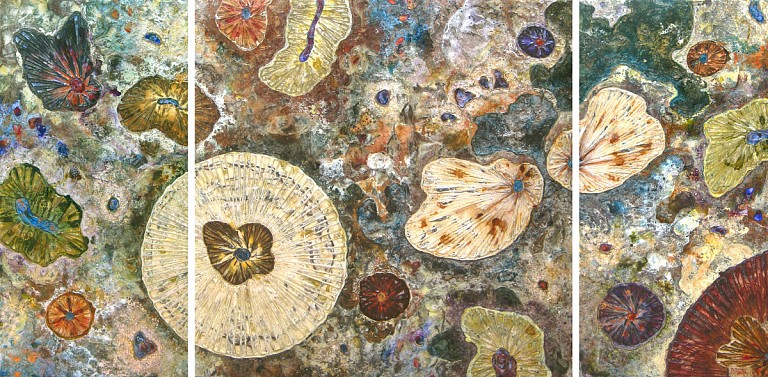
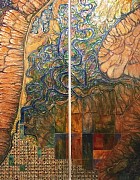
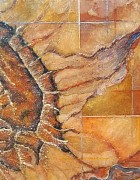
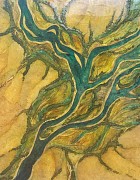
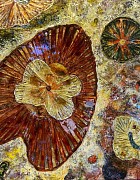
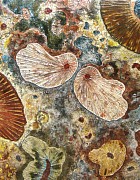
Highlighted Artist: MONICA AIELLO
November 11, 2021 - Devin Hardy
For over 20 years, Monica Aiello has explored the outer reaches of our galaxy from her studio in Denver, Colorado.
In our current featured viewing room on Artsy, we wanted to highlight two distinct bodies of work. While Aiello has predominantly looked beyond our own atmosphere for inspiration for her mixed media pieces, in 2017, she turned the lens 180 degrees and began to focus on earth.
Aiello often references, both visually and in her writing, the concept of repeated forms that exist both on the microscopic and the macroscopic scale. She calls this “cosmorphology” – a term she invented to describe the frequent recurrence of these shapes and patterns in the universe in everything from diatoms to volcanic craters on the moons of Jupiter.
“At first glance, my work may appear to be purely abstract. However, upon closer inspection, one finds depictions of specific, scientific subjects - planets, galaxies, biological forms, chemical reactions and mathematics structures.”
In the featured galactic pieces, Many Faces of Pele VII, Ionian Garden V, and Between Pele and Prometheus, Aiello is focusing her attention on Io, one of the four Galilean moons of Jupiter. Io is the fourth largest moon in the galaxy and has the highest density, the least amount of water and the most volcanic activity. In developing this body of work, Aiello worked closely with scientists from NASA and had a chance to see the moon with her own eyes through a high-powered telescope. These alien landscapes, so different from our own and yet created by the same geological processes from the same types of atoms, “begged for further investigation.”
The earthbound works tell a story of their own, one that is deeply rooted in the relationship between humans and the environment. Blacktail Butte, Confluence, and Sanctuary Jackson Hole are all part of series focused on rivers, the literal and metaphorical lifeblood of Earth. Just as rivers once were one of the primary architects of our planet, now, in the Anthropocene era, humanity dominates the conversation as the primary force that alters the environment. Aiello’s pieces offer a visual to accompany this fact, juxtaposing the fractal patterns of winding streams against the stark, rigid, geometric grid of human influence.
Though the foundation of Aiello’s work involves a deep and complex network of concepts, the physicality of her process is equally as intriguing. In her layers of resin, fiber, paper, paint, and other mixed media elements, she attempts to mimic the geological processes that create these formations, both the earthly and the interplanetary, and captivate her fascination.
Ultimately, though all these pieces are essentially studies of inanimate matter and natural processes outside of human control, Aiello finds that they also invite a certain level of introspection. “Planetary scientists often reference the need to study the cosmos in order to gain a better understanding of ourselves. I also ponder exploration and the unknown in reference to our own humanity,” she says.
Aiello’s scientific curiosity goes far beyond the studio. As STEAM educators, she and her husband Tyler have developed extensive educational programs for school systems in their native Colorado and across the U.S. “I love to devour and share scientific knowledge - astronomy, geology, volcanology, climatology, biology, botany, etc.,” Aiello says.
Diehl Gallery is proud to represent both Monica and Tyler Aiello’s work.
Back to Blog
